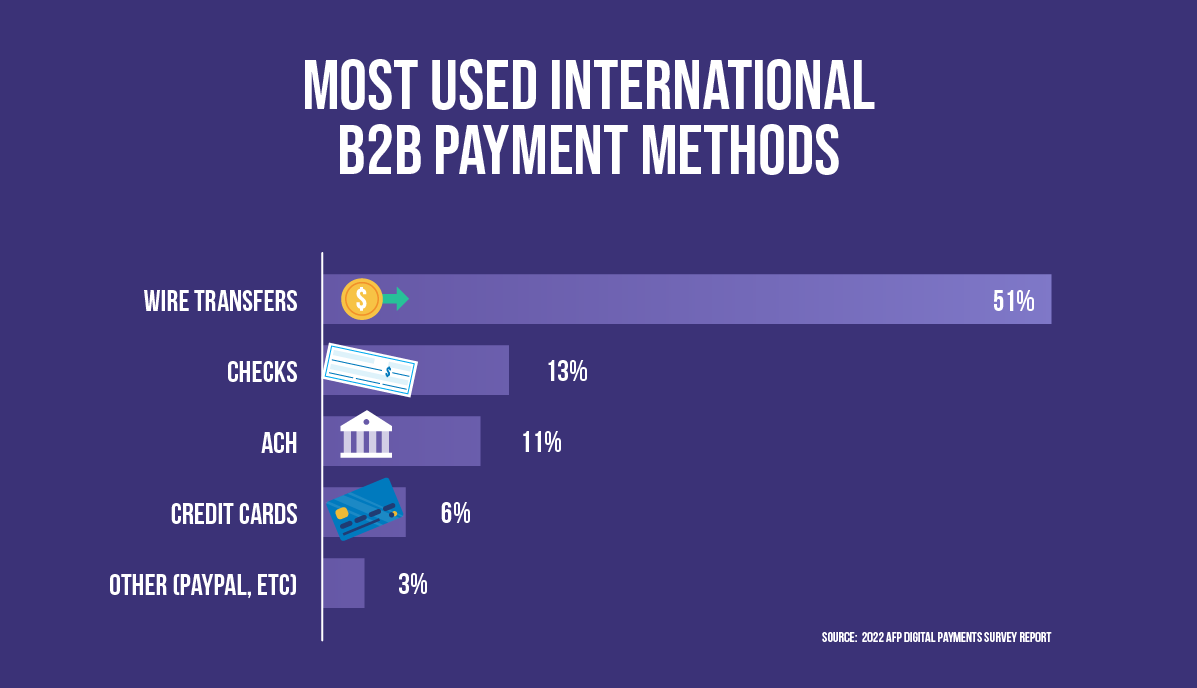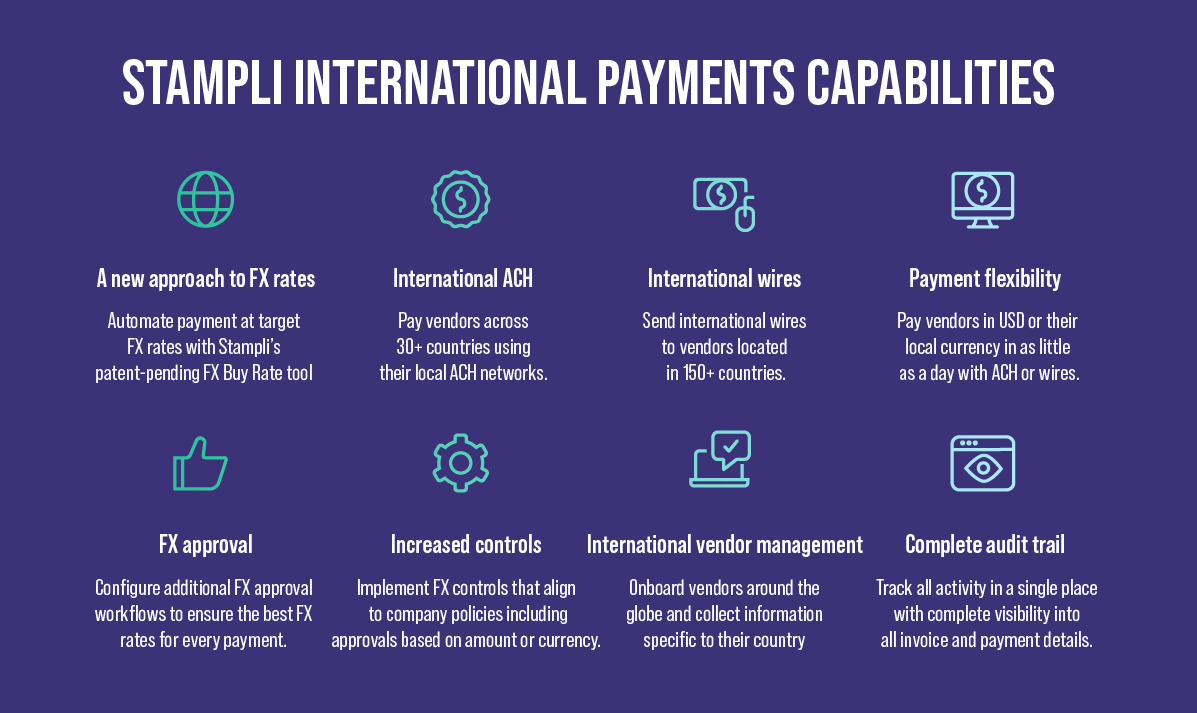Paying international contractors: a step-by-step guide

Hiring international contractors is a great way to grow your business by supplementing your workforce and giving you access to skills and talent. However, paying foreign contractors is different from paying domestic workers or contractors. Considerations such as what currency to use, how to make payments, and how to stay compliant with domestic and foreign tax and business regulations can be challenging.
In this article, we’ll show you the fastest, most cost-effective, and safest ways to navigate paying international contractors.
Let’s dive in.
How to get started
It’s better to identify potential issues during the contractor hiring process than to wait until the work has been completed and they are waiting to be paid. Doing so lets you pay your contractors promptly and avoid unnecessary delays.
There are a few things you need to do before you start paying international contractors. You can protect your business from business and regulatory risk by following six simple steps.
- Complete a Know Your Customer (KYC) check on the contractor.
- Ensure you are compliant with domestic and international regulations and tax rules.
- Decide on a currency.
- Choose payment terms and a payment method.
- Create an international contractor agreement that defines the fees, payment terms, and scope of work.
- Onboard the contractor and begin work.
1. Complete a KYC check on the contractor
The first step in the process is to conduct a KYC check on the potential international contractor. This check helps you verify the contractor’s identity and ensure they aren’t engaged in criminal activity.
2. Ensure compliance with employment laws and tax requirements
For companies hiring foreign contractors, avoiding legal risks and penalties associated with improper hiring practices is a top priority. Before starting a business relationship with a contractor, you need to evaluate the working arrangement to ensure compliance with labor laws and tax reporting regulations.
International contractor classification
Contractors and employees are classified differently around the world. Some countries (including the US) may have labor laws relevant to paying foreign contractors. For example, in the US, a contractor’s status is defined as an individual or business providing services to the general public, often working for multiple clients and paying local taxes.
A foreign country may consider an independent contractor a full-time employee or worker if the hiring business controls the working relationship. In that case, the hiring company may be required to pay employment benefits through tax withholding. Failing to do so could be considered employee misclassification.
In some countries, there may also be laws relevant to paying contractors. For example, some countries require contractors to register with the government before they can do business and receive payment.
Issues can arise when the definition of an independent contractor in your home country differs from the one in the international contractor’s country. For example, in many countries, a contractor who works exclusively for one company can be considered a de facto international employee.
Seek legal advice before working with international contractors to ensure you comply with domestic and foreign regulations and avoid potential employee misclassification.
International tax compliance
In general, you aren’t obliged to withhold taxes from independent contractors. However, you may still need to report taxes. The tax regulations will depend on the independent contractor’s country of residence and your local regulations. In the US, for example, US-based companies hiring foreign contractors must collect an IRS W-8 form (Form W-8BEN-E, W-8ECI, W-8EXP, or W-8IMY) from independent contractors to confirm the contractor isn’t a US citizen. You may also be required to issue IRS 1099s or Form 1042-S to vendors.
Depending on your contractor’s country of residence, you may also be required to complete tax forms for that country. Speak to an international tax advisor to identify any tax implications and ensure your company is compliant.
3. Decide on currency and payment terms
Next, decide which currency you will use to pay the foreign contractor. Keep in mind that your choice involves currency exchange risk for you or the contractor. Exchange rate fluctuations can affect the value of your payment – and result in an over or underpayment. Look to an AP automation and vendor payment solution (like Stampli Direct Pay) that helps protect businesses and international contractors against currency risk.
At the same time, decide on a payment schedule. If you are engaging the contractor on an ongoing basis, they will probably want to be paid on a regular weekly, bi-weekly, or monthly schedule. If they’re working on a one-time project, you may set payment milestones, upfront payment, or payment upon project completion.
If you are paying multiple independent contractors, consider aligning your payment terms to simplify payment processing for your AP team.
4. Choose a payment method
There are several ways to pay international contractors. Here are some of the most common payment options.
International bank transfer (SWIFT)
International bank transfers, or wire transfers, are the most common method to make international payments. A wire transfer is a direct transfer of funds from your business bank account to the contractor’s bank account. Most wire transfers today are made via the SWIFT system, a secure international system connecting financial institutions worldwide.
Wire transfers are a fast and secure method and let you pay contractors almost anywhere in the world. However, wire transfer transaction fees can be expensive. International wire transfers are also difficult to reverse. Finally, many banks charge foreign exchange fees and set their own currency exchange rates, which may expose you to foreign exchange rate risk.

Checks and international money orders
Paper checks and international money orders are another way to pay international contractors. You draft a check or purchase a money order and mail it to the contractor. Because they rely on the postal system, checks and money orders can be a very slow payment method, resulting in late payments and exposing you and the contractor to foreign exchange risk.
Global ACH
Global ACH, or International ACH, is a service based on the automated clearing house system in the US. It provides fund transfer capabilities similar to wire transfers using the ACH system and similar systems in other countries.
Global ACH transfers offer a high level of security and usually have lower transaction fees than wire transfers. However, they can be slow and offer no protection from foreign exchange rate fluctuations. There is one solution that removes FX risk which we’ll cover in section six below.
Credit cards
Physical and virtual credit cards allow you to pay international contractors instantly, and they allow you to track and manage international transactions in real time. However, many international contractors refuse to accept credit card payments or may require you to cover the merchant fees the credit card provider charges for international transactions. Depending on your card provider and type, credit cards may also come with foreign exchange fees for currency conversion, which can increase your FX risk exposure.
Peer-to-peer payment apps and digital wallets
Peer-to-peer (P2P) digital payment platforms like PayPal, Venmo, Wise, Payoneer, and BILL provide international payment services that allow you to pay contractors quickly. When you pay an international contractor, the P2P provider withdraws the funds from your business account and transfers them to an account with the provider. Then, it transfers the funds to the vendor.
Transfer times can be instant if the contractor also has an account with the P2P provider. If they don’t have an account, the P2P provider transfers the funds via wire transfer or Global ACH, which can take days or even weeks.
Digital payments can be very expensive. For example, PayPal charges a percentage fee on top of their domestic transfer fee to receive an international transfer. You may also have to pay the P2P provider’s foreign exchange rates, which may not be favorable.
5. Create an independent contractor agreement
Once you’ve assessed the legal and tax situation and decided on payment terms, method, and currency, you should sign an agreement with the contractor. The agreement defines the nature of your business relationship, payment terms, fees, scope of work, and ownership of the contractor’s work, if applicable. It provides a framework for dispute resolution and ensures clarity about taxes and deliverables. Also, by defining a business and independent contractor relationship, the agreement can help reduce the risk of employment misclassification.

In general, the agreement should define:
- How much your business is paying the contractor.
- How payments are calculated (hours/days worked, milestones completed).
- Payment frequency (weekly, monthly, partial payments, milestone payments).
- Payment currency..
- Payment method (wire transfer, credit card, etc.).
After the contract is signed, you can onboard the contractor.
6. Onboard the contractor and start work
Finally, it’s time to onboard the international contractor. During this step, you collect and complete the relevant documents such as tax forms, bank details, certificates and licenses, and contact information. Collecting this information up front saves you from chasing documents when it’s time to pay your contractor.
An automated, self-serve onboarding process, like Stampli Advanced Vendor Management, makes it easier to get contractors set up and ensures all the required documents are in place before you start work.
International Payments from Stampli Direct Pay
International Payments from Stampli Direct Pay lets you pay international contractors just as easily as domestic contractors. Send international payments with the same workflows and controls as domestic payments — all without leaving your AP system. Pay contractors across 150+ countries while managing internal approval workflows and vendor payment details from within your AP automation system — and save money with a new approach to FX risk.

Pay international contractors fast
With Stampli, you can now pay international vendors in USD or local currency through international wire or Global ACH. Depending on the country, you can make same-day payments. Stampli International Payments allows you to manage your internal approval workflows and vendor payment details without leaving your AP automation system. All payment records are automatically synced back to your ERP while maintaining a complete audit trail in Stampli for easy reconciliation.
Easily manage FX risk
International Payments offers an innovative approach to managing FX risk. You get much more visibility into FX rates and Stampli lets you set FX targets for each foreign currency. When target rates are met, Stampli will automatically execute your payments.
Here’s how Stampli’s International Payments gives you control:
- Set target foreign exchange (FX) rates: Stampli tracks real-time FX rates so you can automatically execute foreign currency payments to get the most favorable rates.
- Customizable FX approvals: Configure additional FX approval workflows to ensure the best FX rates for every payment.
- Flexible payment methods: Pay contractors in as little as the same or one day via international wire or international ACH.
- Vendor management: Stampli helps you collect and maintain banking requirements needed for each country to send payments.
- Domestic & international payments from one system: Make all payments from one system and eliminate time-consuming bank processes and portals.
Stampli makes paying international contractors easy and risk-free. Contact us today to arrange a demo.